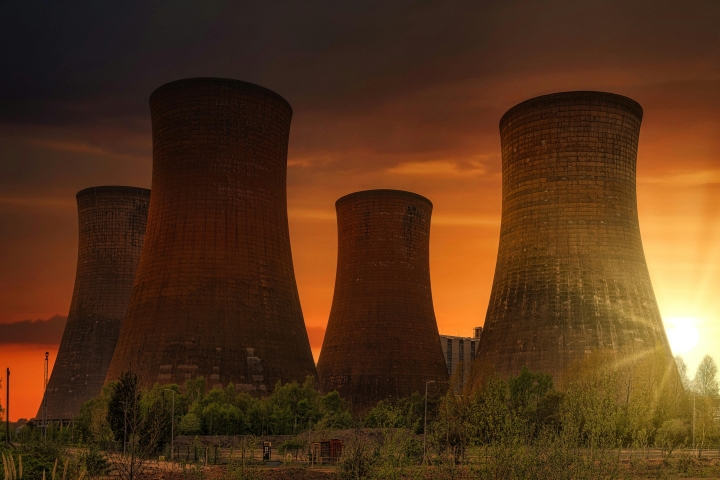At approximately 10 p.m. on May 17th, the last reactor at Taiwan’s Maanshan Nuclear Power Plant (NPP3) was disconnected from the grid. With that single, silent act, Taiwan effectively turned the page on nuclear energy—realizing the long-aspired vision of a “nuclear-free homeland,” a goal enshrined in both its Basic Environment Act and Climate Change Response Act.
This was not merely the decommissioning of a power plant—it was a defining moment in a decades-long struggle over the future of Taiwan’s energy system, a choice between divergent paths of progress. Since the energy transition policy was initiated in the first quarter of 2016, nuclear power’s share of electricity generation has plummeted from 17% to just 3%. Coal, long the dominant source, has seen its share fall from 47% to 35%. Meanwhile, renewable energy—largely wind and solar—has grown nearly tenfold, from 1.3% to 12%, and liquefied natural gas (LNG) now supplies 46% of the island’s electricity.
The nuclear question has always been politically fraught in Taiwan. Two national referendums—one in 2018, another in 2021—centered on nuclear policy. And just days before Maanshan’s shutdown, on May 13, the pro-nuclear majority in Taiwan’s Legislative Yuan amended the Nuclear Reactor Facilities Regulation Act, allowing plant owners to apply for life extension even after operating licenses have expired. These same lawmakers are now pushing for a referendum on NPP3 in August, potentially reopening a door that the nation has just shut.
As this new chapter begins, it’s critical to challenge some persistent myths surrounding Taiwan’s nuclear phase-out—misconceptions that distort the real impacts of the transition.
- Air Quality Has Improved, Not Worsened
One of the most repeated claims is that ending nuclear power worsens air pollution. In fact, the opposite is true. Between 2016 and 2024, Taiwan’s annual average PM2.5 concentrations dropped from 20 µg/m³ to 12.8 µg/m³. Taipower—the state-owned utility—cut total air pollutant emissions by 70% during the same period. The reduction in coal usage, combined with stricter regulations and cleaner alternatives, has directly contributed to healthier air.
- Electricity Prices Have Risen—But the Story is Nuanced
Yes, average electricity prices rose 33% from 2016 to 2024. But context matters: most of that increase occurred after the 2022 global energy crisis. For households and small businesses, prices increased by only 7.1%. The share of household income spent on electricity actually decreased from 1.1% to 0.9%. Behind the scenes, long-standing fossil fuel subsidies—particularly those benefiting industrial users—have been reformed, freeing up resources for a more equitable energy system.
- The Grid Is More Stable, Not Less
High-profile blackouts in 2018 and 2021 damaged public trust in the power supply sufficiency. In reality, Taiwan’s energy supply has become more reliable. In 2016, there were only 126 days in the year with adequate supply margins. By 2024, that number had jumped to 347. Investments in battery energy storage (1.5 GW) and demand response (2.7 GW) now provide valuable flexibility to manage the island’s 43 GW peak demand.
Why We Still Say “No” to Nuclear
Critics often reduce opposition to nuclear energy to concerns over safety and waste. Those concerns are real—but they’re not the only reasons. The deeper issue is the crowding-out effect.
Research—including a 2020 study by Sovacool et al.—suggests nuclear and renewables often compete for policy attention and investment. Taiwan provides a textbook case. Under the current nuclear phase-out strategy, the goal is to boost renewables to 20% and gas-fired power to 50%, allowing coal to drop to 30%. That pathway is working: renewable capacity is on track to hit the 20% target by 2027, and coal’s share may fall to 30% as early as this year.
By contrast, the pro-nuclear opposition’s 2025 plan envisions just 10% from renewables and a coal share stubbornly stuck at 44%. In short: where nuclear power persists, decarbonization slows.
This is not just an academic concern. The same political forces advocating for a return to nuclear have proposed slashing budgets for rooftop solar, wind power, and household energy efficiency programs. They’ve blamed rising electricity prices on renewables, and threatened to dismantle the Feed-in-Tariff mechanism—a critical tool for driving renewable energy investment.
Taiwan’s Message to the World: A Carbon-Free, Nuclear-Free Future Is Possible
As the crowd gathered in front of the Taipower building on May 17th, there was a palpable sense of victory—but also vigilance. Among the hundreds who came to mark this historic occasion were supporters from across Asia: Japan, South Korea, India, the Philippines, and beyond. Their presence was a reminder that Taiwan’s energy story resonates far beyond its shores.
This moment is not the end of the fight—it’s the start of a new phase. The path to net-zero remains steep, but Taiwan now stands as living proof that decarbonization does not require dependence on nuclear power. With the right mix of political will, public support, and smart investment, a carbon-free and nuclear-free future isn’t just possible—it’s happening.
Let that be a message not just to Taiwan, but to the world.



